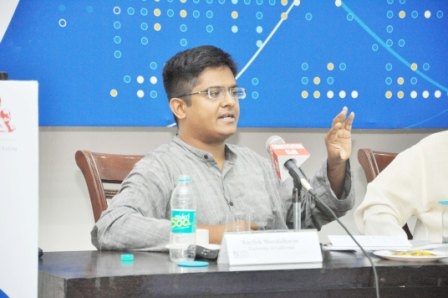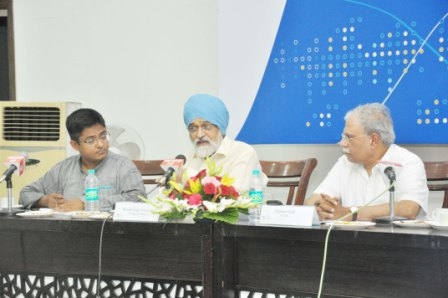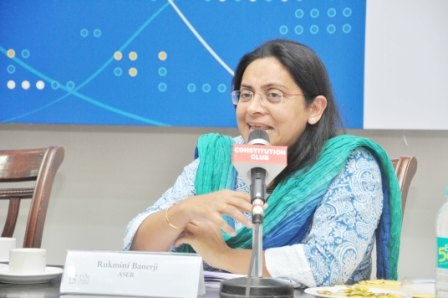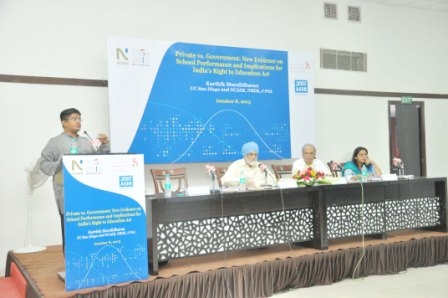Private vs. Government: New Evidence on School Performance and Implications for India's Right to Education Act
08 Oct 2013
Past Event
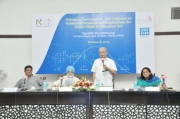
Private schools in rural Andhra Pradesh operate at substantially lower per-child cost than government schools and deliver slightly better learning outcomes, according to results from the Andhra Pradesh School Choice Project, a study designed to measure the educational outcome differences between private schools and government schools. The findings were presented by the study’s author Professor Karthik Muralidharan at a NCAER-hosted lecture chaired by Shekhar Shah, Director-General NCAER, with Guest of Honour Montek Ahluwalia, Deputy Chairman of the Planning Commission, and Dr Rukmini Banerji, Director of ASER, providing comments. “This project represents one of the most comprehensive and rigorous studies on school choice and private schooling globally, and has been described as a landmark study that will shape the debate on an important policy question for years to come,” said Shekhar Shah. The study tracked 10,245 children across 180 villages in five Andhra Pradesh districts over four years.
The study finds that private school teachers have lower levels of formal education and training than their government counterparts and earn significantly less (on average less than a sixth of government teacher salaries). But private schools have better measures of teaching effort: lower teacher absence, higher teacher activity, longer school days and less multi-grade teaching. At a substantially lower cost per student (less than a third of per-child government spending), private schools deliver slightly better test score gains, suggesting that private schools could deliver even better education outcomes if they have the same per-child spending as government schools.
The study also reveals important implications for India’s Right to Education Act (RTE). Clause 12 of the RTE mandates 25% reservation in private schools for economically disadvantaged students, which has raised concerns that the influx of these students could have an adverse effect on existing private school students. The study finds no such negative effect. “Clause 12 of the RTE is a rare example of policy that could improve both equity and efficiency. But substantial efforts need to be made to implement this in a transparent and systematic way at all levels,” said Professor Muralidharan. A summary for the lecture can be found here, while the paper can be read here.
Karthik Muralidharan is Assistant Professor of Economics at the University of California, San Diego, and a Non-resident Fellow at NCAER. He is also a Faculty Research Fellow at the National Bureau of Economic Research, a Junior Affiliate at the Bureau for Research and Economic Analysis of Development, and a Member of the J-PAL network. Karthik has an MPhil from Cambridge and a PhD from Harvard, both in economics.







